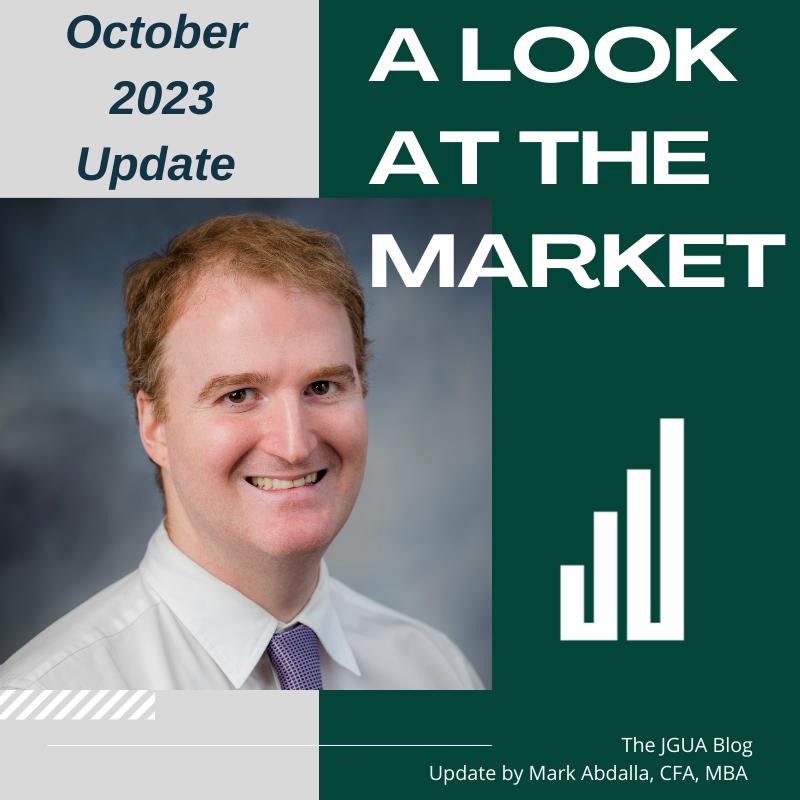October has historically been a poor month for equity investors with major stock market crashes in the Octobers of 1929, 1987 and 2008. This past October, the S&P 500 stock index fell by 2.8% weighed down by…
- The uncertainty that comes with a new Middle East war
- Political infighting even within singular parties as witnessed by Republicans arguing over a new House Speaker
- Higher for longer interest rates that impact everything from bond markets to fiscal deficits.
The 10-Year Treasury yield increased from 4.6% to 4.9% during the month of October with an unusual amount of volatility as at one point investors bought Treasury bonds as “safe haven assets”. The Yield Curve has been inverted, meaning short term rates are higher than longer term, since early last year. This inversion is an ominous sign for the economy and often precludes a recession where the Federal Reserve cuts short term borrowing rates. This past month, we witnessed a narrowing of the yield curve inversion not because short term rates went down but because long term rates went up. We are now in a “higher for longer” interest rate environment.
The 2 Year Treasury Yield minus the 10 Year Treasury Yield is now at -19 Basis Points Up from -109 Basis Points in July.
Two-Year Treasury Yield minus the 10-Year Treasury Yield

Source: Bloomberg
The Federal Reserve now consider the economy to be “strong” fueled by a high level of consumer spending as the unemployment rate is still low at 3.7%, well below its 10 year average of 6.2%. Although higher long term rates have weighed on the market this past month, if we enter a new phase of “peak interest rates” with Federal Reserve signaling no more rate hikes, the stock market would be well positioned to do well. Risks to the “peak interest rate” investment thesis include 1) large government fiscal deficits and 2) an increase in inflation. Both of these risks are amplified by large government spending as prices rise with increased spending as do deficits.


